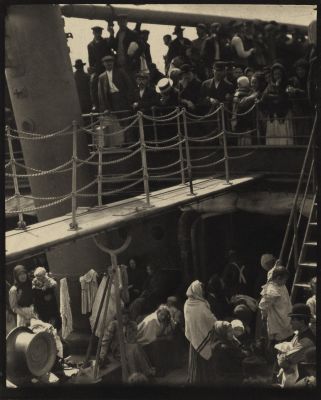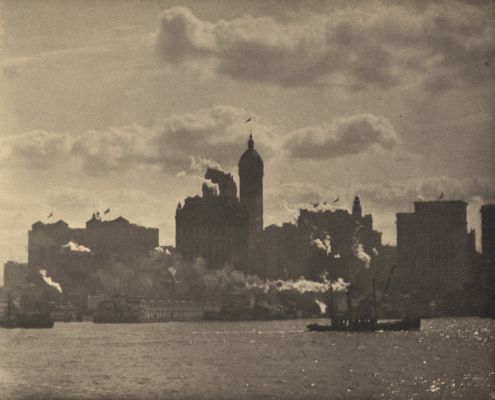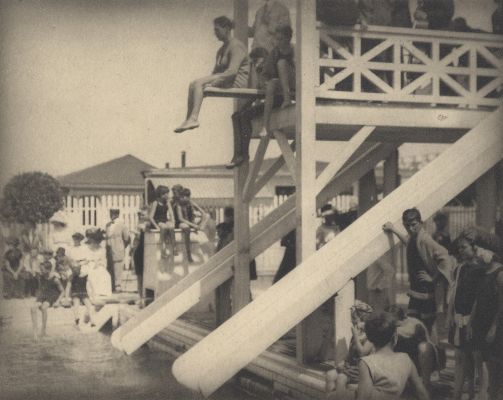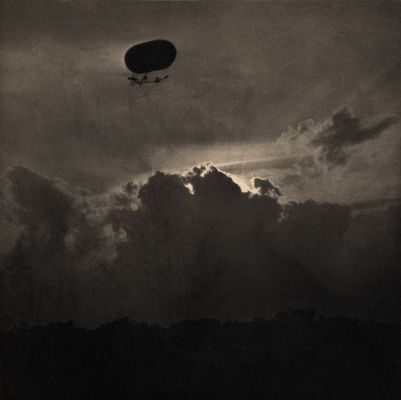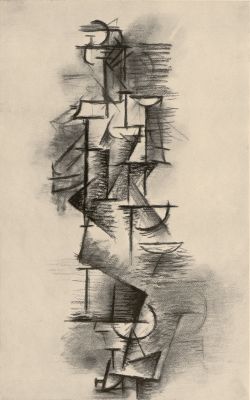
Title
Old and New New YorkArtist
Stieglitz, Alfred (American, 1864-1946)Key FigurePublication
Camera Work XXXVIDate
1910Process
PhotogravureAtelier
Manhattan Photogravure Company, NYImage Size
20.2 x 15.8 cm
The modernization and industrialization of the developed world was a potent subject for artists, particularly photographers. With the back to back inventions of the steam engine, the telegraph and photography, time itself was in question as well as the socio/economic manifestations of ‘progress’. Photographers dating all the way back to Hill and Adamson highlighted fading ways of the past and called into question the health of progress on society. For Stieglitz, the camera represented humankind’s ability to coerce science and technology to serve non utilitarian ends. Stieglitz imaged the absorption of the new into the dynamic stream of civilization by photographing the city, with its influx of immigrants and innovative skyscrapers. The very urban life despised by Emerson became for Stieglitz the ostensible subject for personal expression and evocation. In the same article in which Stieglitz commended photographs of “metropolitan scenes” that managed to “impart… the poetic conception of the subject,” he exalted pictorial photography as “the real photography, the photography of today.” Through Stieglitz’s pictorial photography, the city – one of the most visible signs of modernism – is elevated beyond simple description. Emerson, on the other hand, never got beyond associating photographic realism with the decline of culture. [1]
Reproduced / Exhibited
Frizot, Michael. New History of Photography. Place of publication not identified: Pajerski, 1999. Print P. 323
Greenough, Sarah, and Alfred Stieglitz. Alfred Stieglitz: The Key Set : the Alfred Stieglitz Collection of Photographs. Washington, D.C: National Gallery of Art, 2002. Pl 334
Homer, William I. Alfred Stieglitz and the Photo-Secession. Boston: Little, Brown and Company, 1983. no. 100.
Kruse, Margret. Kunstphotographie Um 1900: D. Sammlung Ernst Juhl; Hamburg: Museum für Kunst u. Gewerbe, 1989 pl. 864
Stieglitz, Alfred, and Dorothy Norman. Alfred Stieglitz. New York: Aperture, 1976. p. 41.
References
[1] Marien, Mary W. Photography and Its Critics: A Cultural History, 1839-1900. Cambridge: Cambridge University Press, 2011. p. 166


